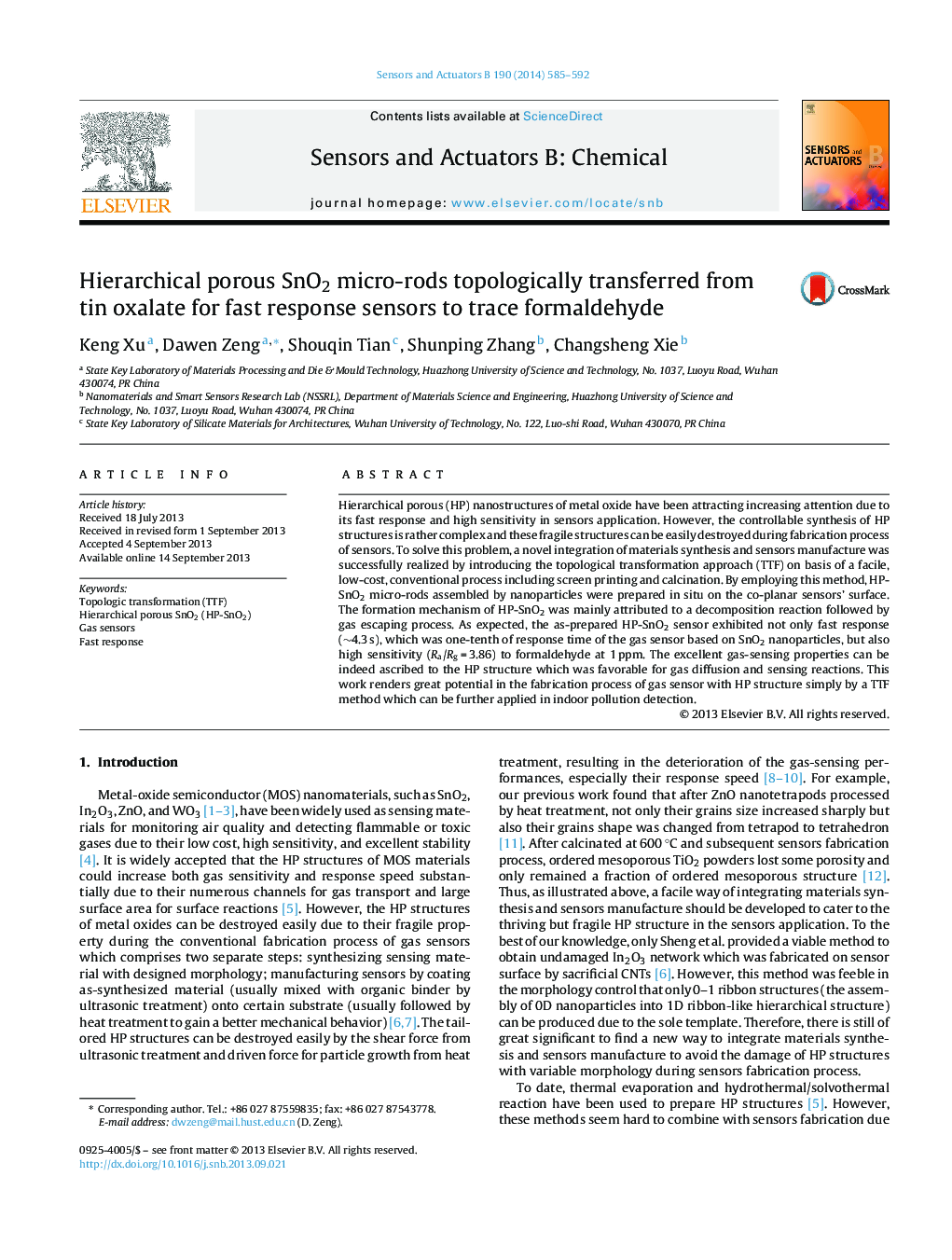| Article ID | Journal | Published Year | Pages | File Type |
|---|---|---|---|---|
| 7148280 | Sensors and Actuators B: Chemical | 2014 | 8 Pages |
Abstract
Hierarchical porous (HP) nanostructures of metal oxide have been attracting increasing attention due to its fast response and high sensitivity in sensors application. However, the controllable synthesis of HP structures is rather complex and these fragile structures can be easily destroyed during fabrication process of sensors. To solve this problem, a novel integration of materials synthesis and sensors manufacture was successfully realized by introducing the topological transformation approach (TTF) on basis of a facile, low-cost, conventional process including screen printing and calcination. By employing this method, HP-SnO2 micro-rods assembled by nanoparticles were prepared in situ on the co-planar sensors' surface. The formation mechanism of HP-SnO2 was mainly attributed to a decomposition reaction followed by gas escaping process. As expected, the as-prepared HP-SnO2 sensor exhibited not only fast response (â¼4.3 s), which was one-tenth of response time of the gas sensor based on SnO2 nanoparticles, but also high sensitivity (Ra/Rg = 3.86) to formaldehyde at 1 ppm. The excellent gas-sensing properties can be indeed ascribed to the HP structure which was favorable for gas diffusion and sensing reactions. This work renders great potential in the fabrication process of gas sensor with HP structure simply by a TTF method which can be further applied in indoor pollution detection.
Keywords
Related Topics
Physical Sciences and Engineering
Chemistry
Analytical Chemistry
Authors
Keng Xu, Dawen Zeng, Shouqin Tian, Shunping Zhang, Changsheng Xie,
